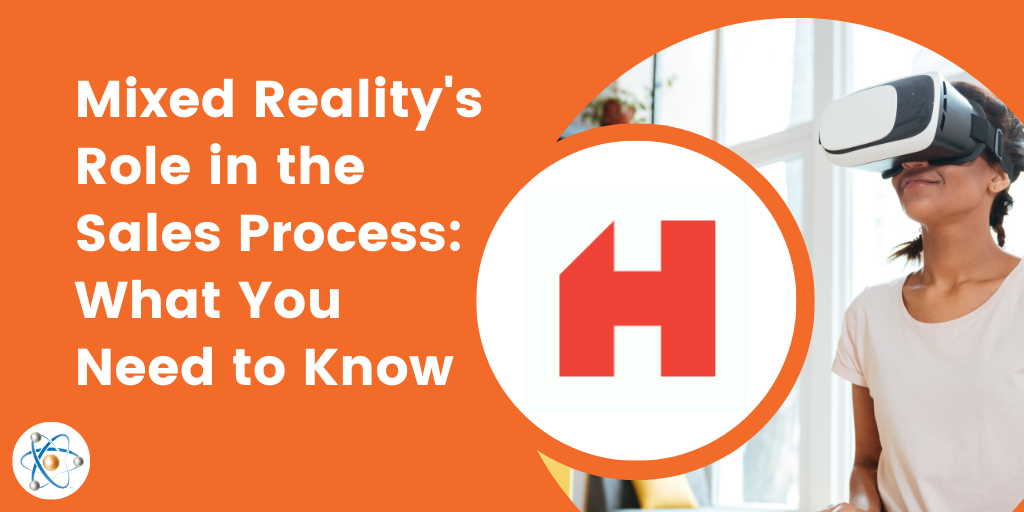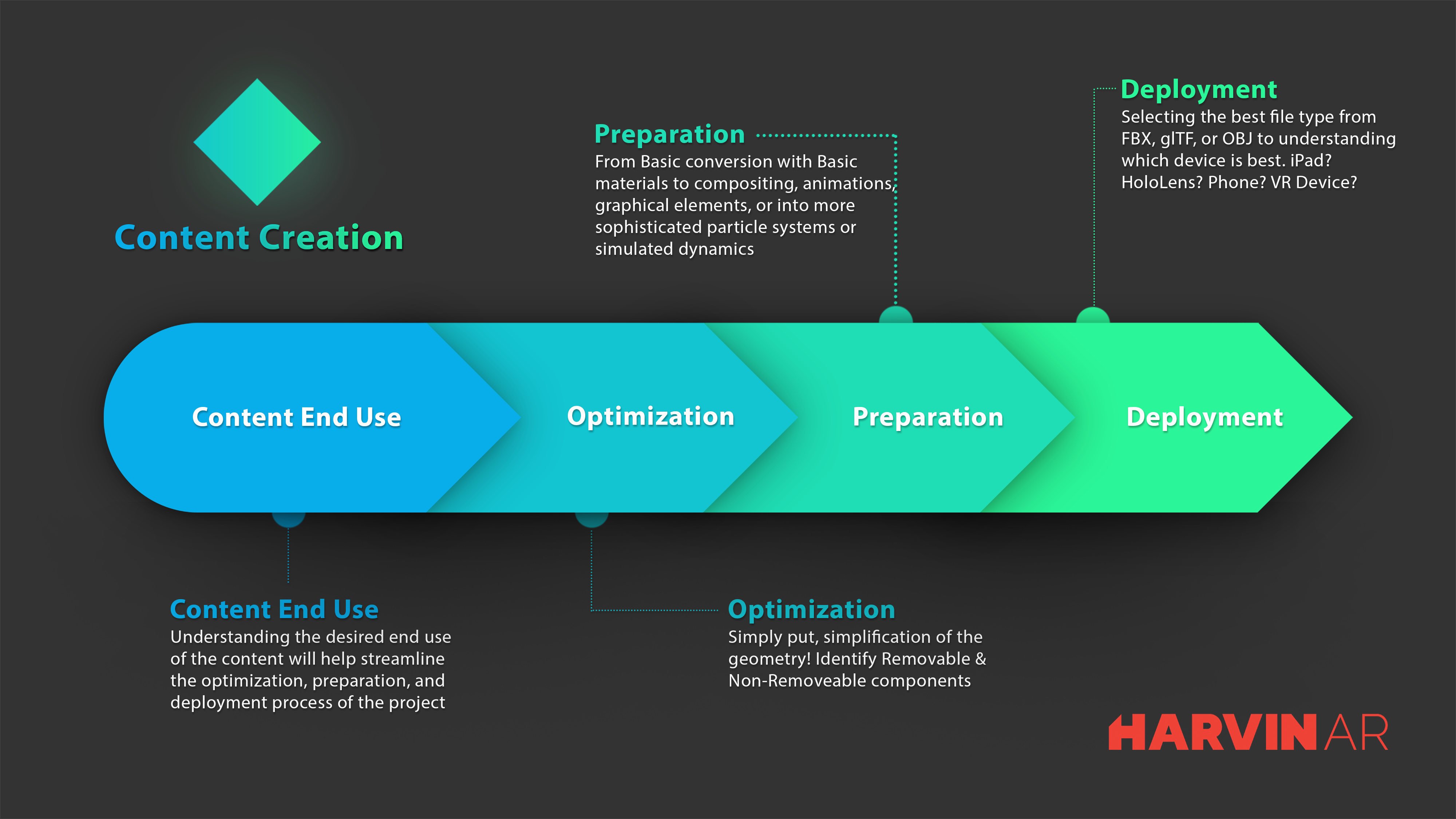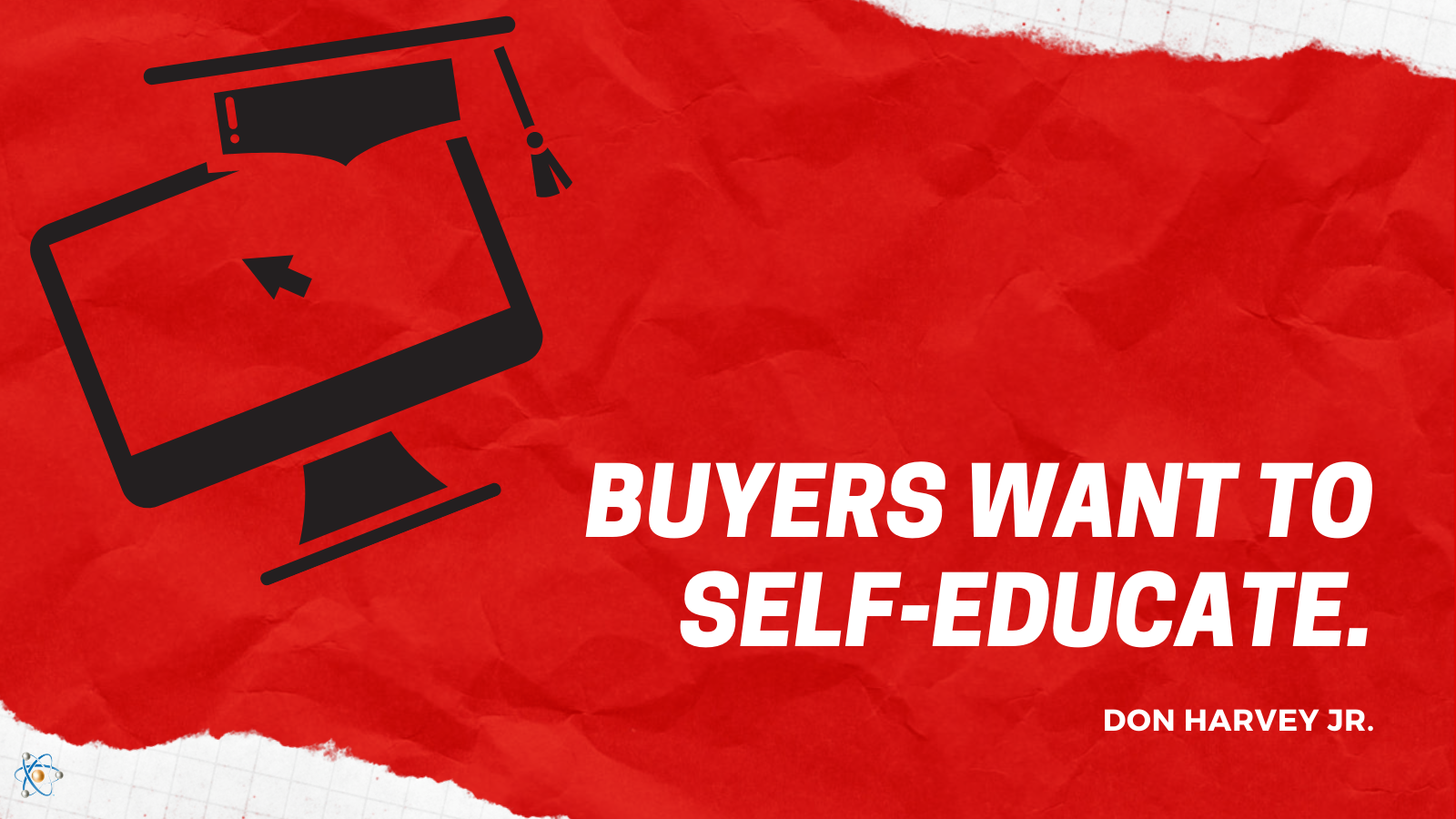
In recent years, leaps and bounds in the world of business technology have greatly enhanced the ways in which B2B companies sell to their customers. From using customer relationship management tools to manage and accelerate the sales process to tapping into social networks to create meaningful connections with prospects, it seems like every year brings a trove of incredible tech that can be leveraged for business growth.
One of the newest technologies to enter the corporate world — mixed reality (MR) — has the potential to totally transform the ways companies sell in 2021 and beyond. MR combines virtual reality (VR) with the real world, allowing digital and physical objects to interact in real-time, and enabling organizations to create fully customizable sales environments for their leads and prospects.
Atomic Revenue and my company, Harvin AR, recently hosted a fascinating Clubhouse discussion in which we discussed some of the applications of MR in the modern sales process — here’s what we learned.
Should My Company Be Using Mixed Reality for Sales?
Steph Hermanson, CRO Atomic Revenue: If you want to use this technology, you need to know your sales process, team, company, and clients inside and out. If you don’t know all those things, then companies like Harvin can’t give you the best possible VR recommendations. In the B2B world, it’s typically a long sales cycle that involves lots of touches and work.
Don Harvey Jr., Co-founder of Harvin AR: Speaking as someone who uses MR for sales (especially with industrial-grade products), one of the first things that comes to mind is, “Ok I have the tech, but I don’t have any content.” That’s one of the first hurdles that must be overcome. Where does the content come from, what should it look like? Let’s say I’m a manufacturer of a broad range of equipment, first thing I’ll do is talk to marketing, then engineering. Explain what I’m trying to achieve through MR and articulate the content that I need. Bringing departments together.
Steph: So true, to apply things like MR you must 1) know the sales process and 2) realize there are resources within and outside my company that should be tapped to generate leads, close sales, and create advocates with MR. Everything that happens in your sales process is affected by other departments, groups, and internal biases. Lots of uncontrollable variables. You shouldn’t have to have the knowledge about how to create these 3D models and virtual experiences. That’s why Harvin exists.
What is the Content Creation Process Like?
Don: There are 4 Steps to Content Creation at Harvin AR:
-
Content End Use
-
Optimization
-
Preparation
-
Deployment
All of them are very important but we are going to begin with the most important of them all, which is Content End Use.
Before we begin to build any 3D content for Mixed Reality we really need to understand what is the intended end-use. This is imperative because it aids in the steps of Optimization, Preparation, and Deployment. Some examples of end-uses for 3D Content could be anything from trade shows, plant assessments, maybe FATs, or maybe we build some highly industry-specific 3D models for sales and marketing. We even build content for maintenance and sanitation training. I mean, the list really goes on and on. So, just be sure to spend time really thinking about this specific step.
The 4-Step Mixed Reality Content Creation Process

Jason Henkhaus, Sales Consultant, Harvin AR: You can build anything you want, but it has to be designed for your end-user. The collaboration needs to be there, setting the foundational goal, producing deliverables for your consumers in a new, unique way that provides a lot of information in a single setting.
Don: Agreed. Next in the process is Optimization. Now, this is simple in explanation and in practice. I’d actually beg to say that a high percentage of engineers already have the skillset to do this right now. It is the simplification of geometry. Identify removable and non-removable components. Remember though, the hardware we use to display 3D Models such as phones, tablets, AR, and VR Headsets, is only going to get more powerful, which requires less time spent on Optimization.
All right, the third step is Preparation. This is where we get to be creative with those ideas for engaging, meaningful, and unique content. Although I must say, we don’t always have to be super creative. Sometimes basic materials with a basic model will be just as impactful.
We love using Blender 3D internally within Harvin AR, and even more so, we love to educate clients on how to use Blender within their businesses. But there are several other programs and tools that are just as powerful to create that amazing 3D content. Animations, basic-to-near-realistic materials, adding elements such as 3D text, 3D arrows, simulated graphics, and all sorts of different things. There’s really no limit to what we can create and this is the step where we really get to be creative!
Then we come to Deployment. This is an important step because it really does go hand in hand with the intended end use of the content. Select the best file type from FBX, glTF, OBJ, to understand the workflow and which device is best. Viewing content through an iPad versus a HoloLens, or an Oculus Quest are all very different viewing experiences. And when used properly, can really deliver a great presentation or demonstration.
What Are Some of the Ideal Use Cases for Mixed Reality in the Sales Process?
Don: One of the beautiful things about MR is that the content we create emulates the real world. This applies to helping your sales team. With one client, Harvin rebuilt a 600 ft. aluminum extrusion production line in order to help them understand and learn about the industry that they’re serving.
One of the things that are really interesting is that MR improves in-person demos; we’re going beyond the physical limitations of the real world. Salespeople are limited by physical limitations, but with MR deployed on a phone, tablet, or headset, there’s no weight to content so you can literally bring any content you want to an in-person demo. You can cycle through a number of products that are relevant to your prospect anywhere whether it’s a conference room, sales floor, or even a restaurant.
The bottom line is that buyers are more interested in self-education than taking a traditional sales approach.

Steph: Yes, I saw a study that said 70% of a buyer’s journey happens before they ever talk to a salesperson. Buyers prefer to trust reviews on Amazon versus what a salesperson says. Buyers have so much info at their fingertips. MR gives them the opportunity to experience products for themselves and see it in their world. MR demos and sales presentations will help your company get more qualified leads through the door and allow you to provide what someone needs by showing him or her that your product is the right solution for them.
How Do You Get Visibility Into the Content that You Create?
Steph: Visibility comes down to your process, with something like blogs or web pages that are more digitally trackable. Anything that gives more insight into the sales process is great.
Don: When you’re delivering VR content, there are lots of metrics that can be pulled to see how that content is being used and how it’s performing.
Steph: You can develop heatmaps to see where MR/VR content is brought into the process. Are top sellers using VR? How is it affecting their pipeline, close rate, ect.? It’s all about the storytelling of the process from prospect to closed deal. If MR helps support the process and close deals faster, makes salespeople happy in their jobs, then that’s a win.

Does Entry Into Using MR for Sales Come With a Big Price Tag?
Jason: One of the things I want to make sure people understand is that if you have a marketing department or an R&D department, half of the tools used in MR utilize the same tools that those departments already have and pay for.
Many companies have the assets in-house already to develop what’s needed for this space today. You don’t have to come up with brand new ideas, you can take other concepts/content and apply them to MR. It comes down to ‘how do your end-users need to digest or chew this elephant.’ It’s not easy to get into this space, but many companies are halfway there without even knowing it.
Steph: Yes, many companies have the ability to do this already but are unaware that it’s essentially a matter of turning it on. It definitely takes work, but it’s a matter of unlocking internal knowledge and ideas. Which comes with cost efficiencies that make getting started feasible.
Jason: Something that’s unique to Harvin is that the way your company’s end-user consumes your content can be done through any hardware at different price points. HoloLens is $3500, or an Oculus is $300. What’s great about Harvin, is that if you have an iPhone or an Android, you can deliver this content via any of these devices. Most people have a smartphone. I have a customer who builds out suites for hospitals, has lots of money to spend on projects ‒ he should have a premium headset. How you consume it is very important.
Don: From another angle, it’s important to be device agnostic so you can take the content you create and distribute it to a wide range of people regardless of what device they have.
In Conclusion: Why MR is Essential to the Future of Sales
As Mixed Reality technology advances, B2B companies who plan to thrive into the future need to see this innovation as an essential part of their sales process and overall growth cycle. MR strategies are proven to help develop new techniques and sales tools to further support your particular goals.
It may seem overwhelming to think about implementing MR or VR, but with our person-to-person help, it is attainable and less costly than you might imagine. Harvin AR empowers you to uncover new, exciting ways to use Mixed Reality and the Harpra Platform and bring your company forward. If you have any questions about how MR might help your company, feel free to reach out.
 About the Author
About the Author
Don Harvey Jr., is Co-Founder of Harvin AR. He spent more than five years working with Augmented Reality within the industrial sector, ranging from Equipment Manufacturers, Manufacturing and Processing End Users, Distributors, and Engineering Firms. For eight years he worked in industrial-sector distribution supporting end-users in food processing, light manufacturing, and materials handling. He and his father, Don Harvey Sr., have a passion for revealing the possibilities of MR for businesses and partnering with those companies to ensure success.





